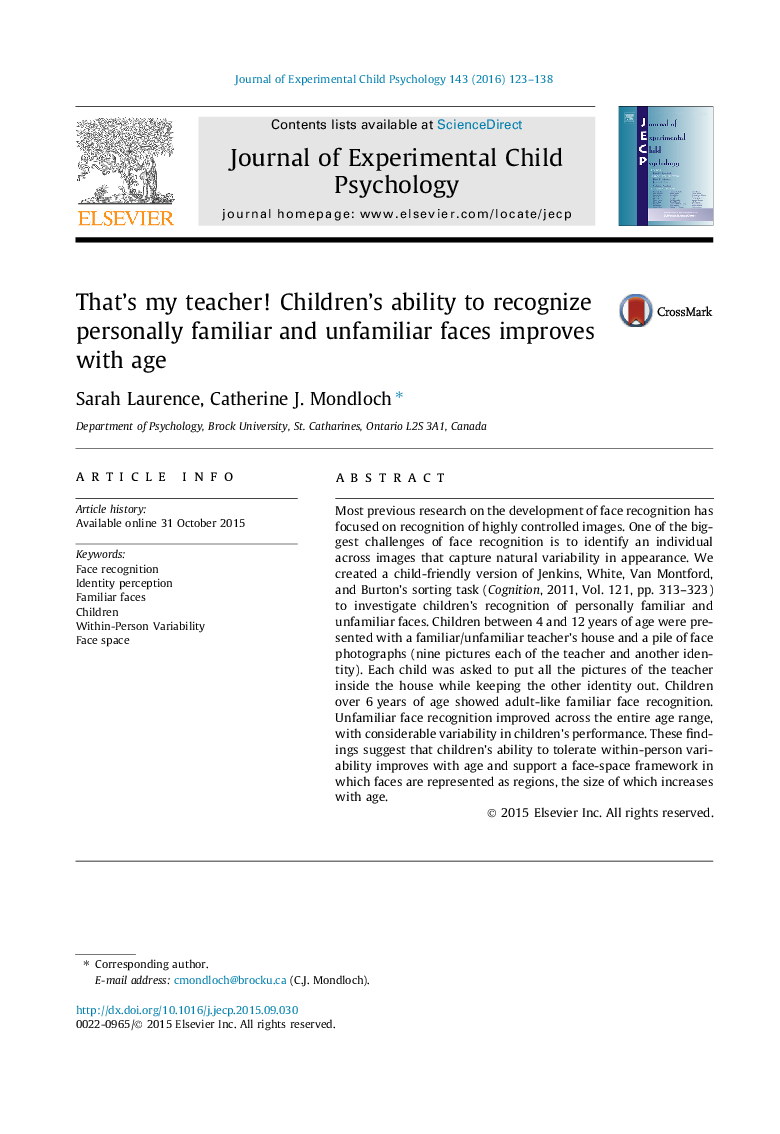| Article ID | Journal | Published Year | Pages | File Type |
|---|---|---|---|---|
| 7274754 | Journal of Experimental Child Psychology | 2016 | 16 Pages |
Abstract
Most previous research on the development of face recognition has focused on recognition of highly controlled images. One of the biggest challenges of face recognition is to identify an individual across images that capture natural variability in appearance. We created a child-friendly version of Jenkins, White, Van Montford, and Burton's sorting task (Cognition, 2011, Vol. 121, pp. 313-323) to investigate children's recognition of personally familiar and unfamiliar faces. Children between 4 and 12Â years of age were presented with a familiar/unfamiliar teacher's house and a pile of face photographs (nine pictures each of the teacher and another identity). Each child was asked to put all the pictures of the teacher inside the house while keeping the other identity out. Children over 6Â years of age showed adult-like familiar face recognition. Unfamiliar face recognition improved across the entire age range, with considerable variability in children's performance. These findings suggest that children's ability to tolerate within-person variability improves with age and support a face-space framework in which faces are represented as regions, the size of which increases with age.
Related Topics
Social Sciences and Humanities
Psychology
Developmental and Educational Psychology
Authors
Sarah Laurence, Catherine J. Mondloch,
